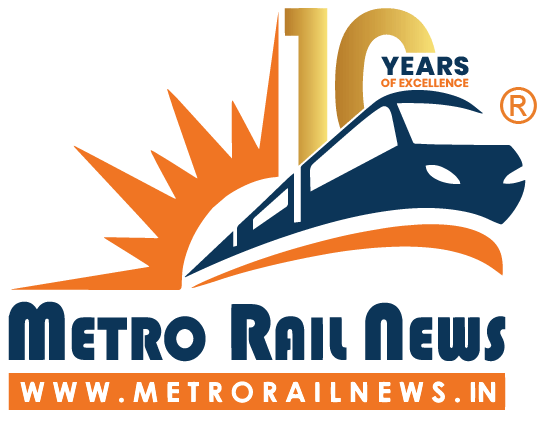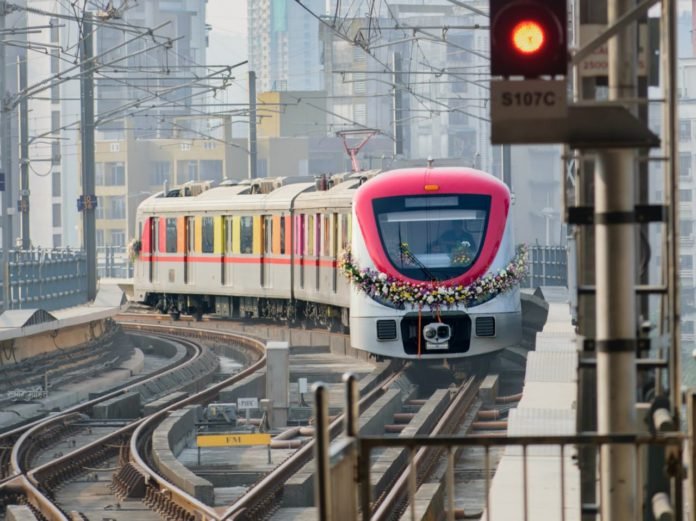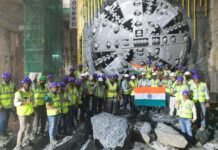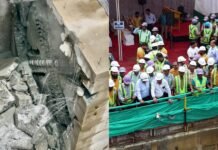Introduction
Navi Mumbai, as evident by its name itself, is a newly planned & developed city situated in the vicinity of Mumbai across Thane & Raigad, being an indispensable part of the Mumbai Metropolitan region. The growth & planning of the city is connected with the inception of various other allied bodies, specifically CIDCO.
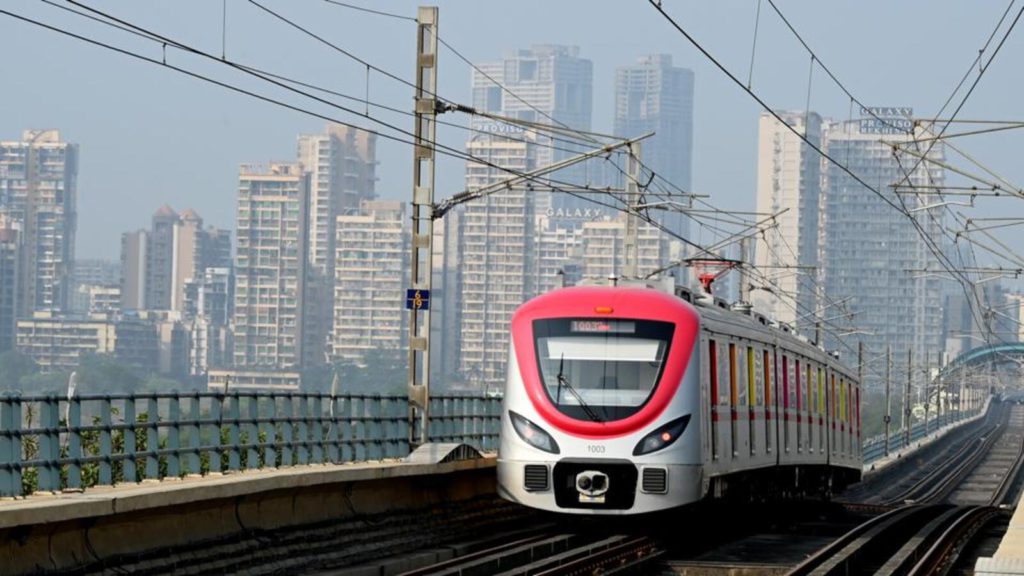
Navi Mumbai was envisioned as a solution to Mumbai’s burgeoning housing crisis. Its primary goal was to provide affordable housing options, alleviating pressure and preventing the spread of slums in Mumbai. This makes Navi Mumbai the go-to place for the migrants, who form the largest demography in the Navi Mumbai region. The population of Navi Mumbai in 2011 was 1,120,547, according to the census conducted by Census India. The breakdown by gender showed 610,060 males and 510,487 females.
Navi Mumbai prioritized education during its urban planning. They designed each township with a focus on resident access to education. Specifically, the plan aimed to provide one primary school for every 5,000 residents, one high school for every 12,500 residents, and one college for every 50,000 residents. As per an estimate on commutation, Roughly one in four residents, or an estimated 22.5%, are school-going children. Most students stay local for their education, attending schools and colleges within their own township. When it comes to commuting, the majority (76%) opt for walking, while public transport (12%), bicycles (10%), and school buses (2%) make up the remaining methods.
Navi Mumbai is rapidly emerging as an educational hub. This is fueled by the establishment of numerous primary schools and colleges that attract not only local students but also those from Mumbai and beyond, all seeking a high-quality education. So far, as the paradigm of urban mobility in Navi Mumbai is concerned, it offers a well-connected public transport network. NMMT buses cover the city and connect to Mumbai, Thane, and other areas. Local trains and auto rickshaws provide additional options. Interestingly, a new rapid metro system is also under development, with multiple lines planned.
Inception
To understand the backdrop behind the inception of the Navi Mumbai Metro, the following points need to be understood well:
1. Soaring Demand, Strained Infrastructure:
Navi Mumbai’s future is bright, with a brand new international airport on the horizon. However, this exciting development brings a challenge: its current public transport system is at risk of being overwhelmed by the resulting surge in population and economic activity, particularly in Kalyan-Dombivli and Taloja.
2. Vision for a Thriving Hub:
To address this challenge and unlock Navi Mumbai’s full potential, the MMRDA proposed extending the existing Metro Line-5 from Thane to Taloja. This extension isn’t simply about adding a new train line; it’s a strategic move aligned with the vision for the Kalyan Taluka Growth Centre.
3. The Kalyan Taluka Growth Centre: A Model for Development:
Envisioned as a vibrant economic hub akin to Mumbai’s Bandra-Kurla Complex (BKC), the Kalyan Taluka Growth Centre is one of four identified in the MMR’s Draft Regional Plan. This project aims to create significant job opportunities, promote infrastructural growth, and seamlessly connect the area to Thane, Kalyan, and Dombivli.
4. NAINA: Building a Sustainable Future:
The Government of Maharashtra’s establishment of NAINA, a dedicated planning authority, further underscores their commitment to Navi Mumbai’s well-organized and sustainable development. NAINA’s reach extends beyond the immediate vicinity of the airport, encompassing 270 villages across six districts. This comprehensive approach ensures that growth is managed responsibly, with the Navi Mumbai Metro as a key driver of connectivity and progress.
By anticipating future needs and taking proactive measures, the Navi Mumbai Metro extension and the creation of NAINA position Navi Mumbai for a future of manageable growth, economic prosperity, and a well-connected community.
Approval & DPR
While the current corridor may traverse primarily agricultural and undeveloped land, this is a strategic choice for Transit-Oriented Development (TOD). The metro isn’t just about serving existing populations; it’s a catalyst for future growth.
This forward-looking approach prioritises long-term benefits:
- Alleviating Mumbai’s Congestion: By creating a well-connected alternative, the metro incentivises population dispersal, ultimately reducing strain on Mumbai’s existing infrastructure.
- Stimulating Development: The metro’s accessibility will catalyse development along the corridor, fostering the creation of new residential and commercial districts. This will attract residents seeking a less congested environment while maintaining convenient access to the city center.
The metro is not merely a response to immediate needs, but rather a proactive investment that will shape a more balanced and sustainable urban landscape for Navi Mumbai’s future.
DPR & Commercialisation:
Greenlighted in April 2010, the Navi Mumbai Metro gained public support through hearings that same year. By September, CIDCO was appointed to lead construction. May 2011 saw the foundation stone laid, and construction began in October. March 2012 brought the metro’s master plan, hinting at a future Mumbai Metro connection. A crucial construction contract was awarded in mid-2012. May 2021 witnessed a successful first trial run. Finally, on 17 November 2023, Navi Mumbai celebrated the long-awaited opening of Line 1, connecting CBD Belapur to Pendhar.
Lines of Navi Mumbai Metro
Line-1: CBD Belapur – Pendhar (Operational)
- Length: 11.10 km
- Type: Elevated
- Number of Stations: 11
- Station Names: Belapur Terminal, RBI Colony (erst. Sector 7), Belpada (erst. CIDCO Science Park), Utsav Chowk, Kendriya Vihar (erst. Sector 11), Khargar Village (erst. Sector 14), Central Park, Pethpada, Amandoot (erst. Sector 34), Panchanand and Pendhar
Future Lines
Following are the lines planned for the future as the extension of the Line-1
- Line-2: Taloja MIDC – Khandeshwar
- Estimated Cost: Rs. 2820.20 cr
- Length: 7.12 km
- Stations: 6
- Type: Elevated
- Line-3: Taloja MIDC – Pendhar
- Estimated Cost: Rs. 1850.14 cr
- Length: 3.87 km
- Stations: 3
- Type: Elevated
- Line-4: Khandeshwar – Navi Mumbai International Airport (NMIA)
- Estimated Cost: Rs. 1270.17 cr
- Length: 4.17 km
- Type: Elevated & Underground
Latest Update
As of June 2024, the Detailed Project Report (DPR) for Navi Mumbai Metro Lines 2 and 3 is still under development. While an initial DPR was completed in 2011, a fresh assessment is needed to reflect the current state of the areas the lines will traverse.
This new DPR will address factors like:
- Alignment of Bridges: Ensuring the planned bridges are still feasible and optimal considering current infrastructure and development.
- Encroachments: Accounting for any existing structures or developments that might impact the planned route.
- Coastal Regulation Zone (CRZ) Compliance: Verifying adherence to regulations protecting environmentally sensitive coastal areas.
The finalisation of the DPR is crucial for securing funding and initiating construction. We can expect further updates on the timeline once the DPR is complete.
Ridership of Line 1
The Navi Mumbai Metro has seen a promising ridership since its inauguration in November 2023. In just the first 2.5 months of operation, nearly 1 million passengers (9,34,728) took a ride on the metro, generating over ₹2.55 crore in revenue.
Here’s a breakdown of the ridership and revenue by month:
| Month | Ridership | Revenue |
| November | 222,996 | 57,52,069 |
| December | 376,810 | 1,05,78,259 |
| January | 334,922 | 91,71,849 |
| Total | 934,728 | 2,55,02,177 |
The ridership witnessed a steady increase from November to December, with a slight dip in January. However, officials anticipate a rise in ridership figures once the final January data is incorporated.
This strong initial ridership indicates Navi Mumbai Metro’s potential to significantly contribute to the city’s public transport network. As the network expands and integrates with other transportation options, ridership is expected to climb further.
Metro’s Impact on Real Estate
The Navi Mumbai Metro, built on the principles of Transit Oriented Development (TOD), is already demonstrating positive impacts, particularly in the realm of real estate. A report by Hindustan Times highlights a rise in property interest and prices along the metro corridor. Chirag Shah, president-elect of Builders Association of Navi Mumbai (BANM) – Raigad, attributes this to improved connectivity:
- Bridging Distances: The metro has brought previously far-flung areas closer, encouraging reluctant homeowners to finally occupy their properties in areas like Taloja.
- Surge in Buyer Interest: Increased demand for properties in the metro-accessible regions was evident at a recent BANM property expo. Furthermore, inquiries are pouring in for upcoming showcases, showcasing the optimism surrounding the real estate market.
These early trends suggest that the Navi Mumbai Metro will be a significant driver of real estate growth. As the metro network expands and integrates with other transportation options, the accessibility and desirability of these areas will likely continue to rise. This, in turn, can lead to further property value appreciation and increased development activity along the corridor.
The Navi Mumbai Metro is not just a transportation solution; it’s a catalyst for creating a vibrant and well-connected Navi Mumbai, with a thriving real estate market at its core.
Beyond Commuting: The Broader Economic Impact of the Navi Mumbai Metro
The Navi Mumbai Metro isn’t just transforming transportation; it’s poised to be a catalyst for the city’s economic growth. Here’s a look at some potential benefits beyond the immediate convenience it offers passengers.
1. A Boom for Business:
- Increased Commercial Activity: The metro’s accessibility is expected to draw businesses, particularly retail and service establishments, to areas along the corridor. This can create vibrant commercial hubs, attracting customers and boosting local economies.
- Improved Job Market Access: Enhanced connectivity will make it easier for residents to access job opportunities across Navi Mumbai. This two-way flow – residents reaching workplaces and businesses finding skilled employees – can fuel economic dynamism.
Example: The Delhi Metro’s impact on Gurgaon provides a real-world example. Previously a cluster of villages, Gurgaon’s proximity to a metro station led to a surge in commercial development, office spaces, and a thriving job market.
2. New Development Opportunities:
- Emerging Business Hubs: The metro can act as a magnet for new business districts, especially around stations in previously undeveloped areas. This can lead to the creation of office spaces, IT parks, or even industrial zones.
- Investment Potential: The metro’s positive impact on real estate and commercial activity will likely attract investors. This can lead to increased investment in infrastructure, businesses, and real estate projects in Navi Mumbai.
Trend: Cities worldwide are leveraging metro systems to create Transit Oriented Development (TOD) zones. These zones combine residential areas with commercial spaces and job opportunities, all within easy walking distance of metro stations. Navi Mumbai’s metro has the potential to follow this successful model.
3. A More Vibrant City:
- Enhanced Connectivity for Tourists: The metro can make Navi Mumbai a more attractive destination for tourists by providing seamless access to various attractions, shopping areas, and entertainment options. This can benefit hotels, restaurants, and other tourism-related businesses.
- Improved Quality of Life: Reduced traffic congestion due to the metro can lead to a more pleasant living environment. This, combined with easier access to jobs and amenities, can enhance the overall quality of life for Navi Mumbai residents.
The Navi Mumbai Metro’s economic impact is still unfolding, but early signs and global trends point towards a positive transformation. As the metro network expands and integrates with other transportation systems, its influence on Navi Mumbai’s economic landscape is likely to become even more significant.
A Looking Back on The Delay
The Navi Mumbai Metro Line 1, envisioned as a solution to traffic woes and a catalyst for growth, faced significant delays throughout its development. While operational now, understanding the reasons behind these delays can offer valuable insights for future infrastructure projects.
Here’s a breakdown of the delays that plagued Line 1:
- Initial Planning (2007-2011): While the project was conceptualized in the late 2000s, finalizing the route alignment and securing approvals took several years. This initial delay can be attributed to factors like:
- Complexities of land acquisition in a developing city.
- Balancing environmental considerations with infrastructure needs.
- Negotiations with stakeholders, including residents and businesses.
- Construction Phase (2011-2023): Groundbreaking happened in 2011, but construction itself witnessed numerous setbacks, including:
- Contractor Issues: Potential inefficiency or financial troubles & eventually contract terminations with the chosen contractor caused delays.
- Funding Constraints: Unforeseen budgetary limitations also slowed down the pace of construction as the input cost increased.
- Post-Construction (2023-present): Even after physical construction was complete, there was a wait for inauguration:
- Safety and Regulatory Approvals: Obtaining final safety clearances and complying with regulatory procedures added heavily to the timeline.
- Integration with Existing Systems: Ensuring seamless integration with other transportation networks like buses or local trains have required additional time and can take more time as the authorities aim for Multi Modal Development.
The cumulative effect of these delays resulted in a project with an initial target completion date of 2014 opening over nine years later in November 2023. This delay had ripple effects:
- Cost Escalation: Construction material prices and labor costs fluctuated, leading to increased project expenditure over time.
- Public Frustration: Residents who were looking forward to the metro’s benefits had to wait considerably longer than anticipated.
- Loss of Potential Benefits: The economic and social advantages the metro could have brought were delayed, impacting Navi Mumbai’s growth trajectory.
The Navi Mumbai Metro holds immense potential to transform the city’s landscape. By addressing the shortcomings highlighted by Line 1’s delays, future projects can deliver on this promise and contribute to Navi Mumbai’s growth as a well-connected and thriving metropolis.
Challenges Ahead
While Transit Oriented Development (TOD) offers long-term benefits for Navi Mumbai Metro, there are some initial challenges to consider:
Land Acquisition and Development:
- Uncertain Demand: Since the metro traverses undeveloped areas, gauging initial demand for residential or commercial development near stations can be difficult. This might deter investors, slowing down the pace of TOD implementation.
- Land Acquisition Issues: Negotiating land acquisition, especially from private owners in developing areas, can be time-consuming and complex, delaying the construction of supporting infrastructure.
Affordability Concerns:
- Rising Property Prices: The metro-driven rise in property values near stations might push affordable housing options further out, potentially creating a situation where residents who rely on public transport cannot afford to live close to stations.
Example: In Gurgaon, India, the metro led to a surge in commercial development near stations. However, rising land prices pushed affordable housing further away, creating a situation where some workers couldn’t afford to live near their workplaces.
Initial Ridership and Revenue:
- Lower Initial Ridership: With limited development around stations initially, ridership and revenue generation might be lower than anticipated. This could strain the project’s financial viability in the short term.
This means the need for seamless first- and last-mile connectivity with feeder buses, rickshaws, and pedestrian walkways near stations in Navi Mumbai. Lack of such integration can discourage people from using the metro if reaching the station itself is inconvenient.
Integration with Existing Infrastructure:
- Feeder System Development: Creating a robust network of feeder buses, rickshaws, and pedestrian walkways is crucial for seamless last-mile connectivity. This requires coordination with local authorities and might take time to establish effectively.
Long-Term Planning and Sustainability:
- Phasing Development: Carefully phasing TOD implementation is necessary to ensure a balance between infrastructure development and attracting residents and businesses. Otherwise a planned dream can turn out to be a strategic nightmare.
- Mixed-use Development: Encouraging mixed-use development projects near stations can create a more vibrant and sustainable environment, attracting a wider range of residents and businesses. However, proper planning and regulations are needed to ensure a balanced mix.
These challenges can be addressed through:
- Government Incentives: Providing incentives for developers to invest in affordable housing and mixed-use projects near stations can encourage TOD implementation.
- Public-Private Partnerships: Collaboration between the government and private sector can accelerate development and ensure a sustainable revenue model for the metro.
- Community Engagement: Involving residents and businesses in the planning process can foster a sense of ownership and encourage support for TOD initiatives.
By acknowledging these challenges and implementing proactive solutions, Navi Mumbai Metro can leverage TOD principles to create a truly sustainable and well-connected city for the future.
Conclusion
The Navi Mumbai Metro is poised to be a transformative force for the city, shaping its future as a well-connected, thriving metropolis. While initial ridership figures are promising and the project holds immense potential, there are hurdles to overcome. By proactively addressing operational challenges, navigating extension complexities, and considering the wider impact of the metro, Navi Mumbai can ensure its success. Learning from the delays of Line 1, with improved planning, transparent communication, and efficient project management, the Navi Mumbai Metro can deliver on its promise and propel Navi Mumbai towards a bright future.
